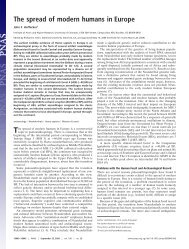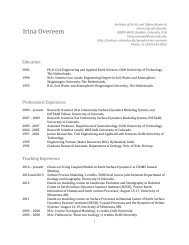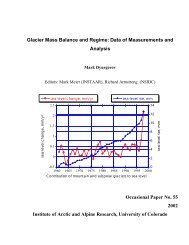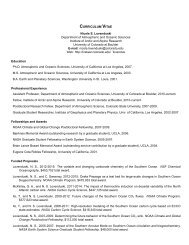Economic Feasibility Study of Colorado Anaerobic Digester Projects ...
Economic Feasibility Study of Colorado Anaerobic Digester Projects ...
Economic Feasibility Study of Colorado Anaerobic Digester Projects ...
Create successful ePaper yourself
Turn your PDF publications into a flip-book with our unique Google optimized e-Paper software.
Examples <strong>of</strong> revenue generation and cost <strong>of</strong>fset are presented in the agricultural<br />
operation interviews, and are further reviewed in the enterprise budget and<br />
sensitivity analysis.<br />
B. Use <strong>of</strong> AD to leverage future operational expansion: Installation <strong>of</strong> an AD system can<br />
open the door to grow the operation, because controls are already in place to<br />
accommodate environmental quality concerns, including odor control. Mike Casper<br />
<strong>of</strong> Microgy noted a case in Wisconsin where a 4,000 head dairy producer with an<br />
existing digester was able to more easily double the size <strong>of</strong> his operation to 8,000<br />
because the technology was in place. Doug Derouchey <strong>of</strong> Wyoming Premium Farms<br />
and Adam Barka <strong>of</strong> Christensen Farms LLC both acknowledged that part <strong>of</strong> the intent<br />
behind installation <strong>of</strong> two AD systems was to accommodate expansion. While AD<br />
units may accommodate operational expansion, it is important to consider that<br />
inappropriately low feedstock availability may make the digester malfunction. When<br />
installing a digester, it is important to maintain a balance between expansion goals<br />
and current and short-term availability <strong>of</strong> feedstock.<br />
C. Markets for effluents and environmental goods: Compost, fertilizer, and carbon<br />
markets all provide opportunities for revenue generation. Use <strong>of</strong> an AD system may<br />
also help the products become branded as a renewable energy systems, or carbon<br />
neutral systems—a title that may provide increasing benefit as eco-labeling becomes<br />
more prominent in the food labeling industry.<br />
3.2.5 Capital Financing: All technology providers noted that recent disruptions to the<br />
financial markets have affected their ability to secure capital financing for large projects.<br />
<strong>Economic</strong> recession, the collapse <strong>of</strong> national financial institutions, and the closing <strong>of</strong> regional<br />
banks (such as Greeley’s New Frontier Bank), have yielded complex macroeconomic<br />
results. Among the macroeconomic effects are high interest rates and difficulty for<br />
technology providers and agricultural operations to secure financial capital. Furthermore,<br />
the effects <strong>of</strong> proposed reforms to the financial system are unknown, making it difficult to<br />
predict when and to what extent the capital market will rebound. Technology providers<br />
report that the most relevant financial impacts on the industry are:<br />
A. Rapid changes in interest rates. For example, two technology providers reported<br />
that in mid-2008, tax exempt municipal bonds for $50-$60 million projects were at 7%<br />
in Texas and at 9% in California. In November 2008, the interest rate rose to 14%,<br />
where it has essentially remained since that time.<br />
B. High interest rates by historical standards.<br />
<strong>Economic</strong> <strong>Feasibility</strong> <strong>Study</strong> <strong>of</strong> <strong>Colorado</strong> <strong>Anaerobic</strong> <strong>Digester</strong> <strong>Projects</strong><br />
Prepared by Dr. Catherine Keske, <strong>Colorado</strong> State University<br />
August 2009<br />
Page 18 <strong>of</strong> 79
















